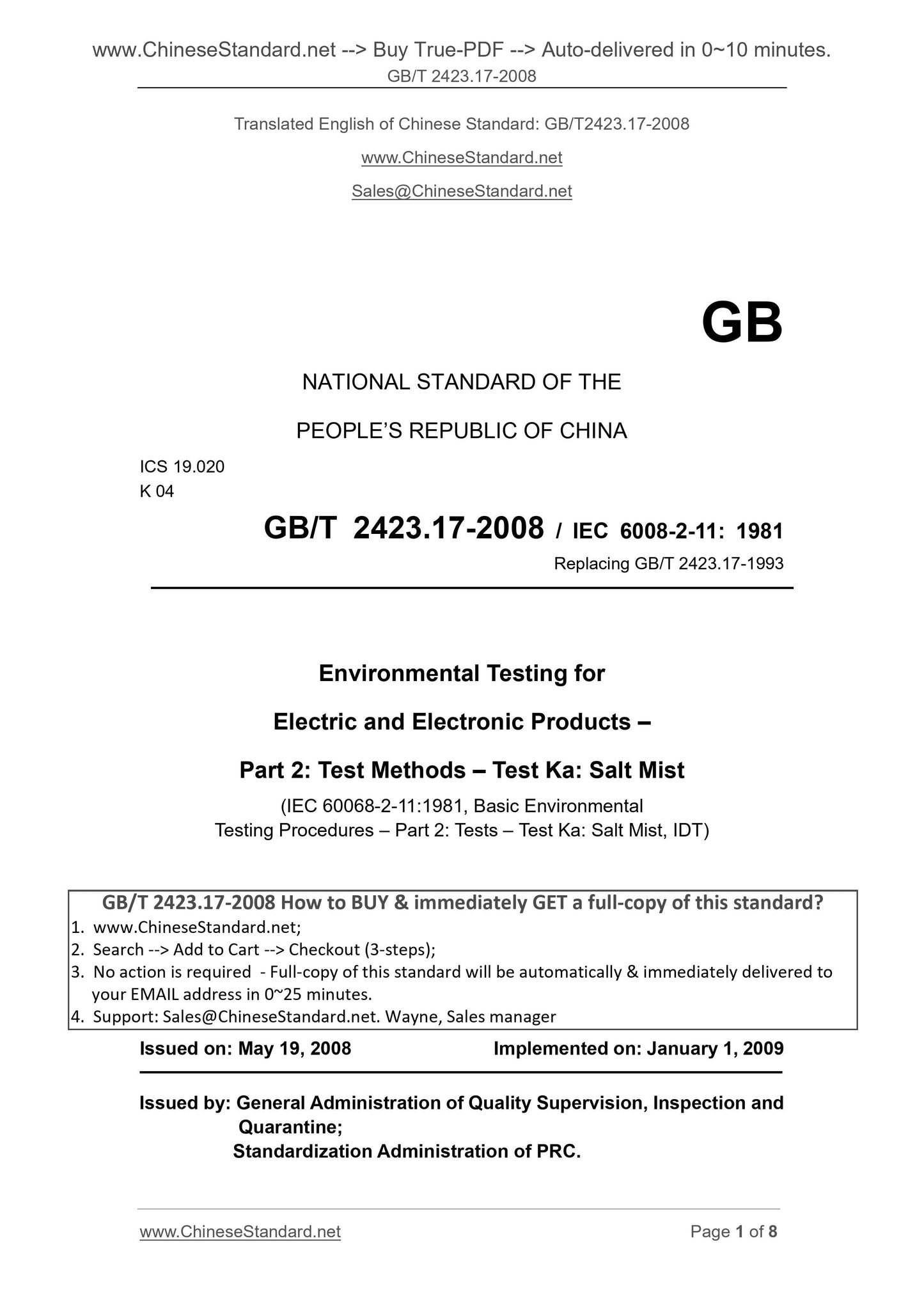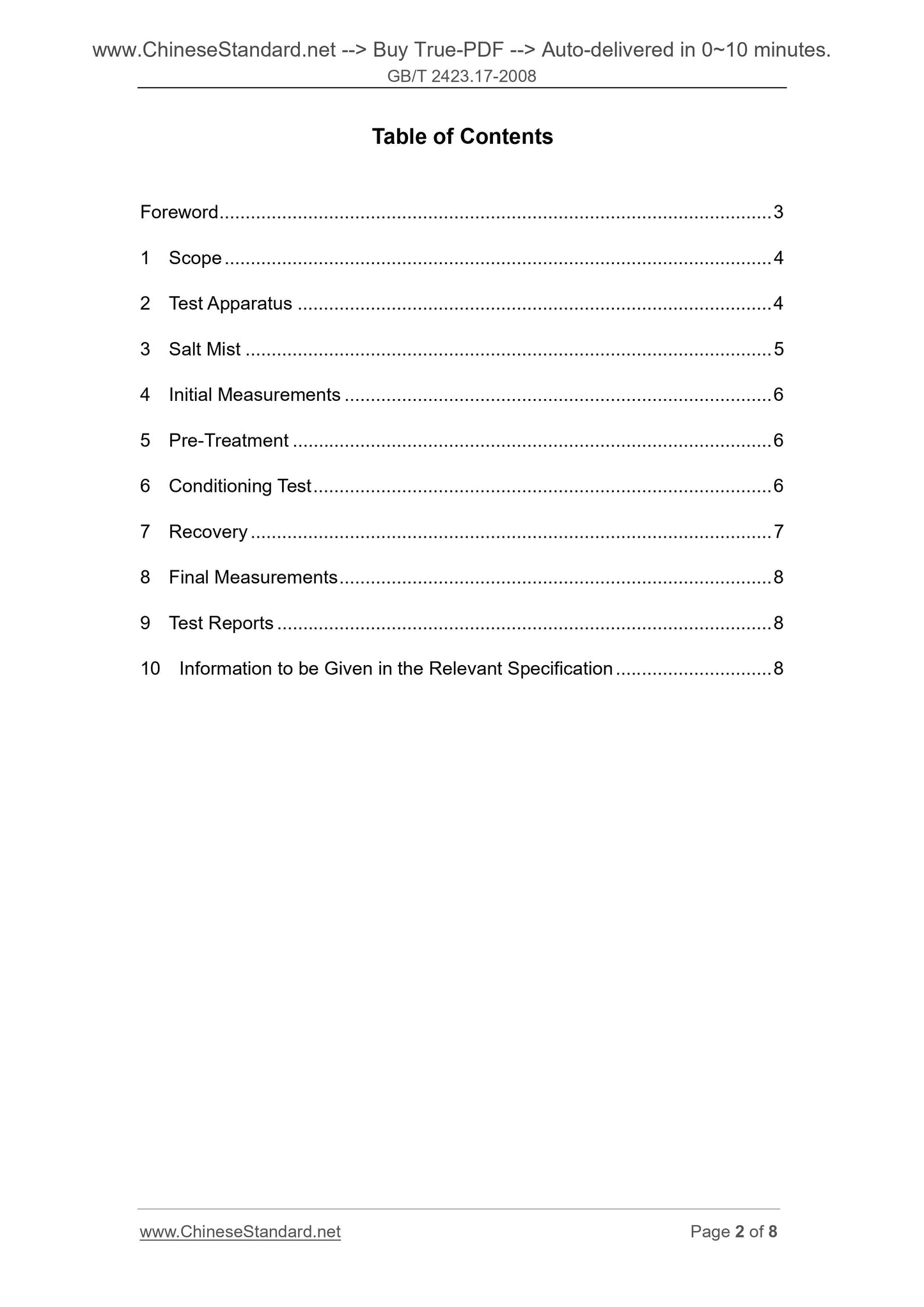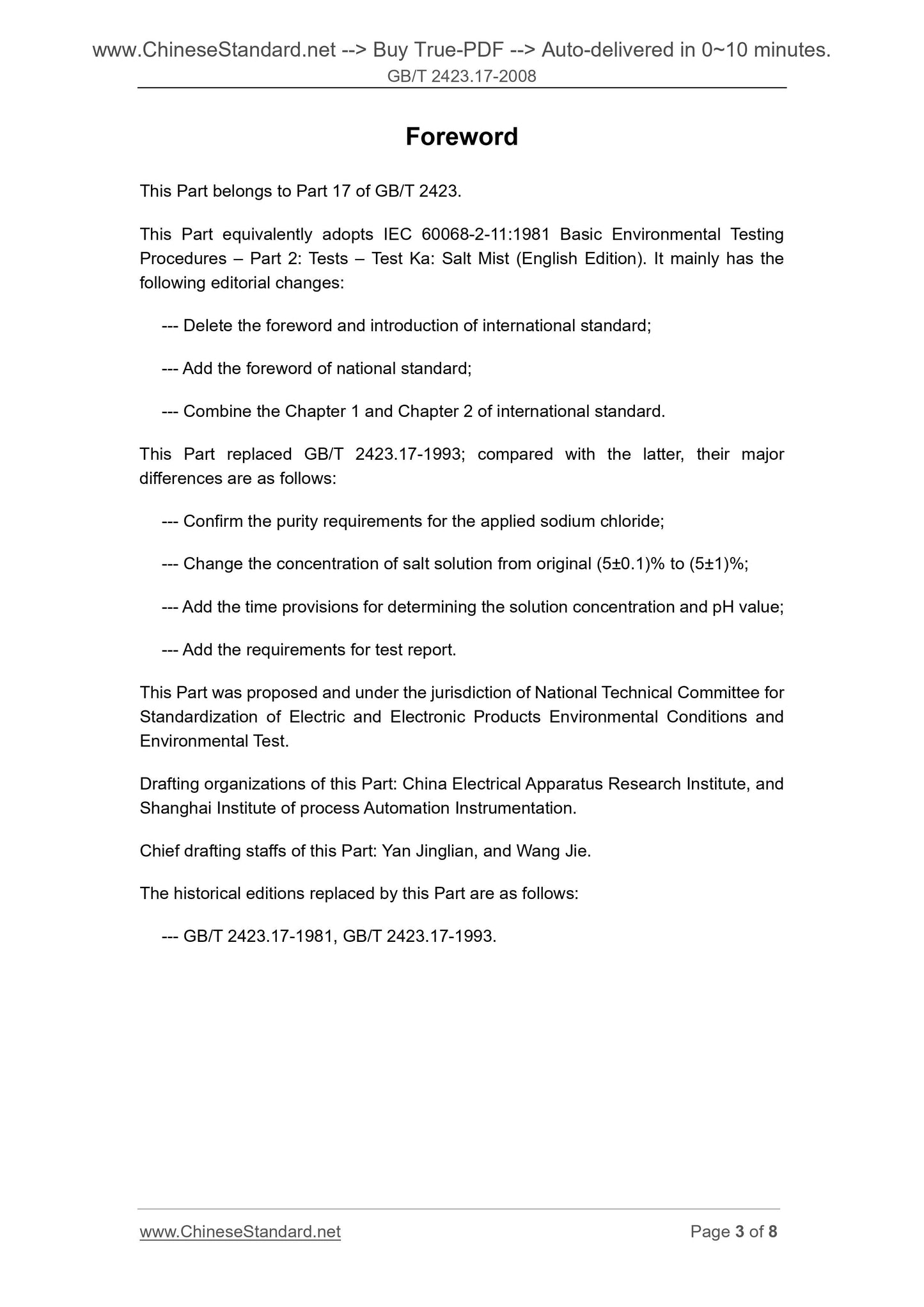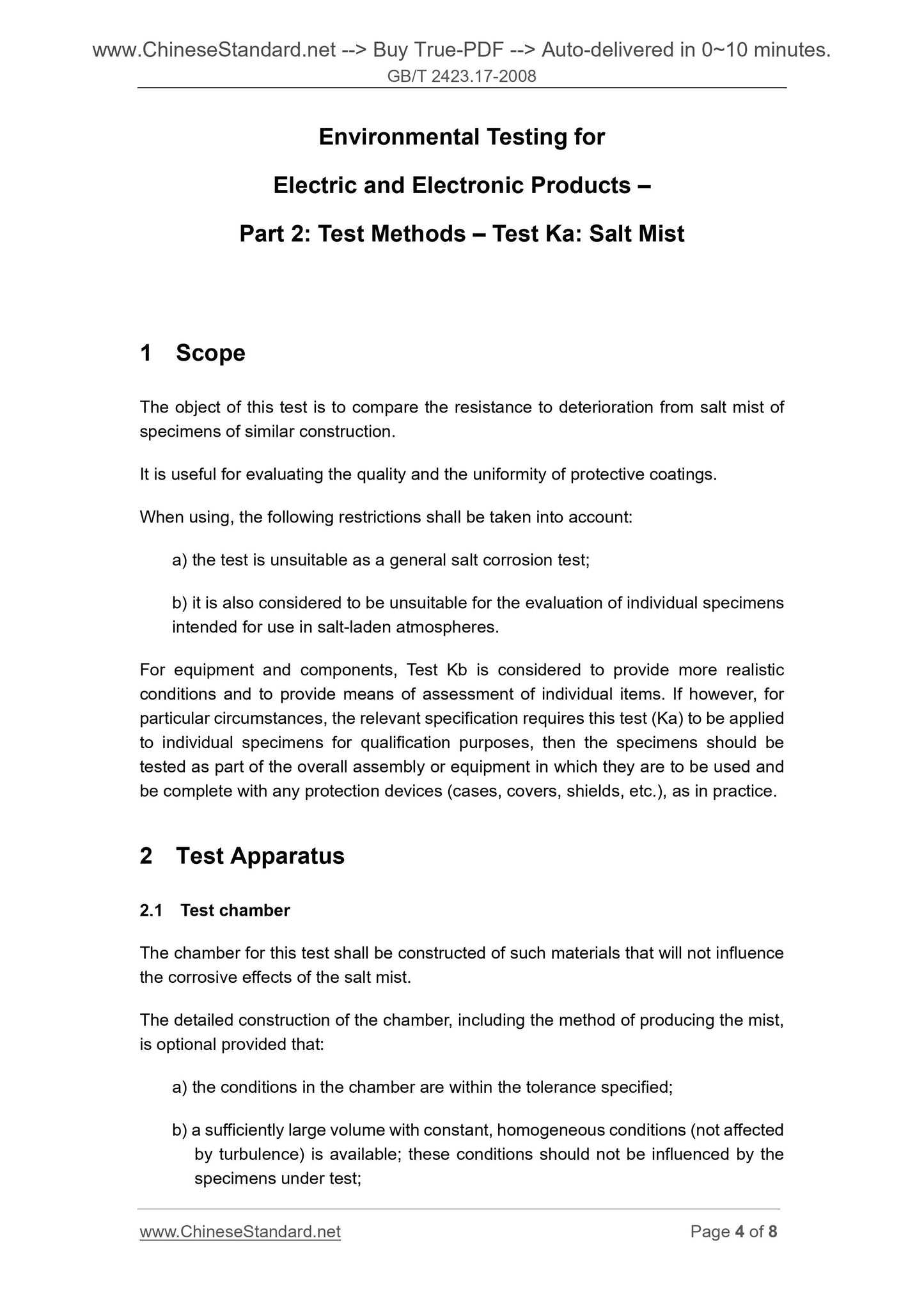1
/
of
4
PayPal, credit cards. Download editable-PDF and invoice in 1 second!
GB/T 2423.17-2008 English PDF (GB/T2423.17-2008)
GB/T 2423.17-2008 English PDF (GB/T2423.17-2008)
Regular price
$70.00
Regular price
Sale price
$70.00
Unit price
/
per
Shipping calculated at checkout.
Couldn't load pickup availability
GB/T 2423.17-2008: Environmental testing for electric and electronic products - Part 2: Test method - Test Ka: Salt mist
Delivery: 9 seconds. Download (and Email) true-PDF + Invoice.Get Quotation: Click GB/T 2423.17-2008 (Self-service in 1-minute)
Newer / historical versions: GB/T 2423.17-2008
Preview True-PDF
Scope
This test is applicable to the ability to compare salt spray corrosion with similar structures.This test is also applicable to assessing the quality and uniformity of protective coatings.
When using, the following restrictions should be considered.
A) This test is not suitable as a common salt spray corrosion test;
B) This test does not apply to the evaluation of individual specimens used in salt atmospheres.
For equipment and components, Test Kb provides more realistic test conditions and a single sample evaluation method. but
If, in some cases, in order to ensure quality, the relevant specification requires individual samples to use this test method, the sample should be used as an entire component or
The components of the equipment are tested together with the actual protective equipment (box, lid, jacket, etc.).
Basic Data
| Standard ID | GB/T 2423.17-2008 (GB/T2423.17-2008) |
| Description (Translated English) | Environmental testing for electric and electronic products - Part 2: Test method - Test Ka: Salt mist |
| Sector / Industry | National Standard (Recommended) |
| Classification of Chinese Standard | K04 |
| Classification of International Standard | 19.020 |
| Word Count Estimation | 7,781 |
| Date of Issue | 2008-05-19 |
| Date of Implementation | 2009-01-01 |
| Older Standard (superseded by this standard) | GB/T 2423.17-1993 |
| Adopted Standard | IEC 60068-2-11-1981, IDT |
| Regulation (derived from) | Announcement of Newly Approved National Standards 2008 No. 8 (No. 121 overall) |
| Issuing agency(ies) | General Administration of Quality Supervision, Inspection and Quarantine of the People's Republic of China, Standardization Administration of the People's Republic of China |
| Summary | This standard applies to compare the structure of the sample with similar resistance to salt spray corrosion. This test is also suitable for the quality assessment of the protective coating and uniformity. When used, you should consider the following limitations: a) This test is not suitable as a universal salt spray corrosion test, b) This test does not apply to the use of salt in the atmosphere of the assessment of individual specimens. For equipment and spare parts, Test Kb provides a more realistic test conditions and method of assessing individual specimens. However, if under certain circumstances in order to ensure the quality of the relevant specifications of individual samples of the test method used, the sample should be used as the components or part of a device with the protective device with the actual test. |
Share







